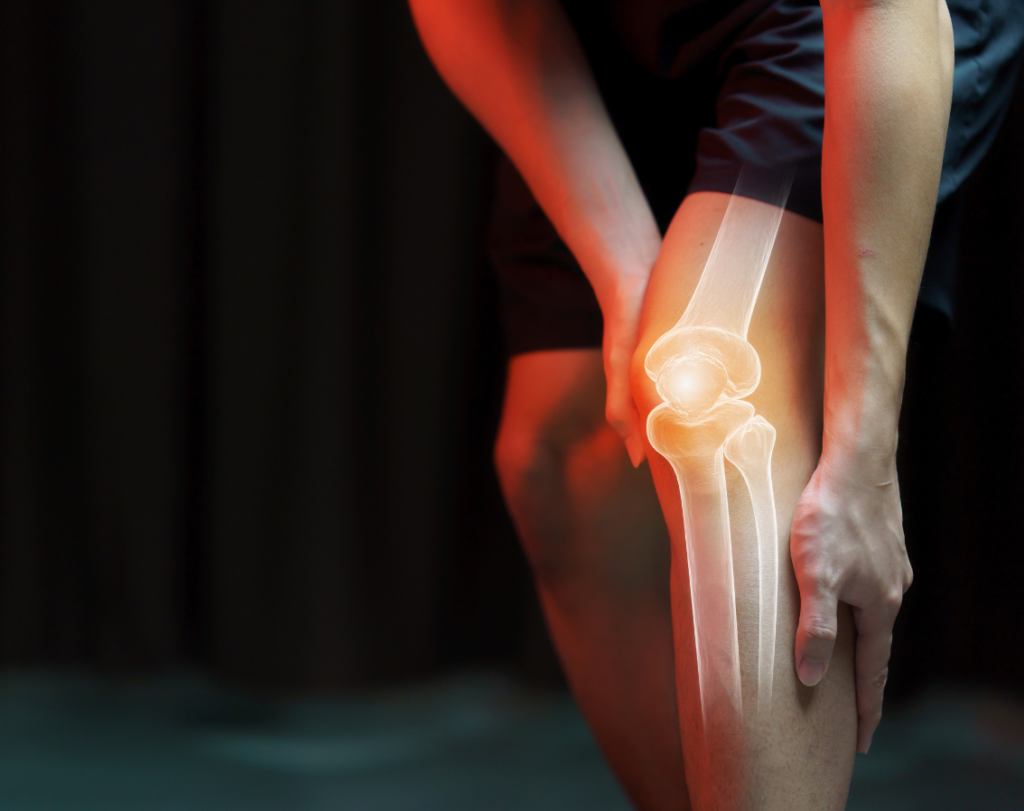Procedures Done
Knee Replacement
Dr. Saswata Datta is a highly skilled orthopedic surgeon in Bardhaman, specializing in knee replacement surgery. With his expertise in this procedure, he provides relief to patients suffering from severe knee pain and mobility issues caused by conditions such as osteoarthritis, rheumatoid arthritis, or post-traumatic arthritis. Dr. Datta's surgical interventions aim to restore joint function and improve the quality of life for individuals experiencing debilitating knee conditions.
Knee replacement surgery, also known as knee arthroplasty, is a surgical procedure that involves replacing the damaged or worn-out surfaces of the knee joint with artificial components. It is primarily recommended for individuals who have severe knee pain, stiffness, or disability caused by conditions such as osteoarthritis, rheumatoid arthritis, or post-traumatic arthritis.
The recovery process after knee replacement surgery varies from person to person, but most individuals can expect to stay in the hospital for a few days. After discharge, they will need several weeks to regain mobility and strength in the knee. Physical therapy and rehabilitation exercises are typically prescribed to aid in the recovery process. It can take several months for a person to fully recover and return to normal activities, although improvements in pain and mobility are usually noticeable within a few weeks.
Like any surgical procedure, knee replacement surgery carries certain risks and potential complications. These may include infection, blood clots, bleeding, nerve or blood vessel damage, stiffness, instability, implant failure, or allergic reactions to anesthesia or implanted materials. However, advancements in surgical techniques and post-operative care have significantly reduced the occurrence of these complications.
The durability of a knee replacement can vary depending on several factors, such as the individual's activity level, weight, overall health, and the type of implant used. However, most knee replacements can last 15 to 20 years or even longer with proper care and precautions. If a knee replacement wears out or becomes damaged, a revision surgery can be performed to replace the worn components.
After knee replacement surgery, it is important to follow certain lifestyle modifications to promote successful recovery and long-term outcomes. These may include regular exercise and physical therapy to strengthen the knee and surrounding muscles, maintaining a healthy weight to reduce stress on the joint, avoiding high-impact activities or sports that can put excessive strain on the knee, and following the surgeon's recommendations for post-operative care, such as taking prescribed medications and attending follow-up appointments.

Hip Replacement
In the field of hip replacement surgery, Dr. Saswata Datta is renowned for his expertise. He effectively addresses hip pain and limited mobility caused by conditions such as osteoarthritis or hip fractures. With his comprehensive knowledge and surgical skills, Dr. Datta performs hip replacement surgeries that result in reduced pain, improved joint function, and enhanced overall mobility for his patients.
Hip replacement surgery, also known as hip arthroplasty, is a surgical procedure that involves replacing a damaged or diseased hip joint with an artificial implant. It is typically recommended for individuals who have severe hip pain, limited mobility, and reduced quality of life due to conditions such as osteoarthritis, rheumatoid arthritis, or hip fractures that cannot be effectively treated with other non-surgical methods.
The recovery period after hip replacement surgery varies depending on individual factors, but most people stay in the hospital for a few days. After being discharged, they will need several weeks to gradually regain strength and mobility in the hip. Physical therapy and rehabilitation exercises are typically prescribed to aid in the recovery process. It may take several months for a person to fully recover and return to normal activities, although improvements in pain and mobility are often noticeable within a few weeks.
As with any surgical procedure, hip replacement surgery carries certain risks and potential complications. These may include infection, blood clots, bleeding, dislocation of the hip joint, leg length discrepancy, nerve or blood vessel damage, implant failure, or allergic reactions to anesthesia or implanted materials. However, advancements in surgical techniques and post-operative care have significantly reduced the occurrence of these complications.
The lifespan of a hip replacement implant can vary depending on factors such as the individual's activity level, weight, overall health, and the type of implant used. Generally, hip replacements can last 15 to 20 years or more. However, if the implant wears out or becomes damaged, a revision surgery can be performed to replace the worn components and restore functionality to the hip joint.
After hip replacement surgery, certain lifestyle modifications are advised to ensure successful recovery and long-term outcomes. These may include following a regular exercise program to strengthen the hip and surrounding muscles, maintaining a healthy weight to reduce stress on the joint, avoiding high-impact activities or sports that can strain the hip, using assistive devices such as canes or walkers as recommended, and adhering to the surgeon's instructions regarding post-operative care, such as medication use and follow-up appointments.
Arthroscopic Surgery
Dr. Saswata Datta's proficiency in arthroscopic surgery sets him apart as a skilled orthopedic surgeon. This minimally invasive technique allows him to diagnose and treat various joint conditions with precision and efficiency. From torn ligaments to cartilage damage, inflammation, or the presence of loose bodies, Dr. Datta utilizes arthroscopic surgery to provide effective and targeted interventions, resulting in improved joint health and reduced pain for his patients.
Arthroscopic surgery is a minimally invasive surgical procedure that allows surgeons to visualize, diagnose, and treat problems inside a joint using a small camera called an arthroscope. It is commonly used to address various joint conditions, including torn ligaments, cartilage damage, inflammation, loose bodies, and joint infections.
During arthroscopic surgery, the surgeon makes a few small incisions around the joint and inserts the arthroscope, which transmits images of the joint's interior to a monitor. Surgical instruments are then inserted through additional incisions to repair or remove damaged tissue, perform necessary procedures, or address the underlying issue. The procedure is guided by the visuals provided by the arthroscope.
Arthroscopic surgery offers several advantages over traditional open surgery. These include smaller incisions, resulting in less scarring and reduced risk of infection. It also typically leads to less pain, faster recovery, and shorter hospital stays. Additionally, arthroscopic surgery allows for better visualization and diagnosis of joint conditions, as well as the ability to perform precise surgical interventions with minimal disruption to surrounding tissues.
Recovery following arthroscopic surgery varies depending on the specific procedure performed and the individual's overall health. Generally, patients can expect some swelling, discomfort, and limited mobility in the joint for a period of time. Physical therapy and rehabilitation exercises are often prescribed to aid in regaining strength, flexibility, and function. The surgeon will provide post-operative instructions, including guidelines on weight-bearing, wound care, pain management, and when to resume normal activities.
While arthroscopic surgery is considered a safe procedure, like any surgery, it carries certain risks. Potential complications may include infection, bleeding, blood clots, nerve or blood vessel damage, allergic reactions to anesthesia or surgical materials, stiffness, or persistent pain. It is important to discuss these risks with the surgeon and follow their pre- and post-operative instructions to minimize the chances of complications.
Shoulder Replacement
Shoulder replacement surgery is another area of expertise for Dr. Saswata Datta. He specializes in addressing severe shoulder pain and limited range of motion caused by conditions such as osteoarthritis, rheumatoid arthritis, or traumatic injuries. Dr. Datta's surgical interventions aim to restore shoulder function and alleviate pain, enabling patients to regain mobility and enjoy an improved quality of life.
Shoulder replacement surgery, also known as shoulder arthroplasty, is a surgical procedure that involves replacing the damaged or diseased parts of the shoulder joint with artificial components. It is typically recommended for individuals who have severe shoulder pain, limited range of motion, and reduced quality of life due to conditions such as osteoarthritis, rheumatoid arthritis, or traumatic injuries that cannot be effectively treated with other non-surgical methods.
The recovery period after shoulder replacement surgery varies depending on individual factors, such as the extent of the surgery and the person's overall health. Typically, patients stay in the hospital for a few days after the procedure. Following discharge, they will need several weeks to gradually regain strength and mobility in the shoulder. Physical therapy and rehabilitation exercises are commonly prescribed to aid in the recovery process. Full recovery and return to normal activities can take several months.
As with any surgical procedure, shoulder replacement surgery carries certain risks and potential complications. These may include infection, bleeding, blood clots, nerve or blood vessel damage, implant dislocation, stiffness, instability, implant loosening or failure, or allergic reactions to anesthesia or implanted materials. However, the occurrence of these complications is relatively low, and advancements in surgical techniques have helped reduce their likelihood.
The lifespan of a shoulder replacement implant can vary depending on factors such as the individual's activity level, weight, overall health, and the type of implant used. Generally, shoulder replacements can last 15 to 20 years or more. If the implant wears out, becomes damaged, or fails, a revision surgery can be performed to replace the worn components and restore functionality to the shoulder joint.
After shoulder replacement surgery, certain lifestyle modifications are advised to ensure successful recovery and long-term outcomes. These may include following the surgeon's prescribed rehabilitation exercises and physical therapy to strengthen the shoulder and regain range of motion, avoiding activities that put excessive strain on the shoulder joint, maintaining a healthy weight to reduce stress on the implant, and adhering to the surgeon's instructions regarding post-operative care, such as pain management, wound care, and follow-up appointments.
Trauma Surgery
Patients seeking treatment from Dr. Saswata Datta can expect personalized and compassionate care. With his extensive experience, advanced surgical techniques, and dedication to patient well-being, he consistently delivers excellent outcomes and helps individuals regain their mobility and improve their overall quality of life.
Trauma surgery is a specialized field of surgery that focuses on the treatment of injuries caused by accidents, falls, violence, or other traumatic events. It involves the immediate assessment, stabilization, and surgical intervention when necessary to save lives and restore bodily function.
It is important to seek immediate medical attention for trauma-related injuries if you experience severe bleeding that doesn't stop with direct pressure, difficulty breathing, chest pain, severe abdominal pain, fractures with visible bone deformity, loss of consciousness, head or neck injuries, or any injury that is potentially life-threatening.
In cases of severe trauma or life-threatening injuries, it is crucial to contact emergency services or visit the nearest emergency room immediately. Delays in seeking medical attention can significantly impact outcomes. For non-life-threatening injuries, it is advisable to contact a healthcare professional promptly to assess the severity and guide you on the appropriate next steps.
While waiting for medical help, it is important to keep the injured person as comfortable as possible. If there is bleeding, apply direct pressure using a clean cloth or bandage. If there is a suspected spinal injury, it is crucial to keep the person's head and neck stabilized and avoid unnecessary movement.
Supporting the recovery process after trauma surgery involves following the instructions and treatment plan provided by the surgeon and healthcare team. This may include taking prescribed medications as directed, attending follow-up appointments, adhering to rehabilitation exercises, maintaining a healthy lifestyle, and seeking support from loved ones or support groups to cope with any physical or emotional challenges during the recovery period.
Foot, Ankle & Ligament Injuries
Dr. Saswata Datta's comprehensive approach extends to the treatment of foot, ankle, and ligament injuries. With his expertise in this area, he provides comprehensive care for a range of conditions, including sprains, fractures, plantar fasciitis, Achilles tendinitis, and ligament tears. Dr. Datta's treatments are tailored to each patient's specific needs, aiming to alleviate pain, promote healing, and restore optimal function in the foot, ankle, or affected ligaments.
Common causes of foot pain and injuries include sprains, fractures, plantar fasciitis, Achilles tendinitis, bunions, corns, and calluses. These can result from overuse, trauma, improper footwear, or underlying conditions.
To prevent foot injuries, it's important to wear proper-fitting shoes with adequate support and cushioning. Gradually increase intensity and duration of physical activities, and warm up before exercise. Maintain a healthy weight, practice good foot hygiene, and avoid walking barefoot in hazardous areas.
Symptoms of an ankle sprain include pain, swelling, bruising, difficulty bearing weight on the affected ankle, and limited range of motion. Some individuals may hear or feel a popping sensation at the time of injury.
Treatment for an ankle sprain typically involves the R.I.C.E. method: rest, ice, compression, and elevation. Immobilization with a brace or cast, pain medications, physical therapy, and gradual rehabilitation exercises are often recommended for proper healing.
Common ligament injuries include sprains, strains, and tears. In the foot and ankle, the most commonly affected ligaments include the anterior talofibular ligament (ATFL) and the calcaneofibular ligament (CFL).
The recovery time for a ligament injury depends on the severity of the injury and the specific ligament involved. Mild sprains may heal within a few weeks, while more severe tears may require several months of rehabilitation and therapy to fully recover. Compliance with treatment and rehabilitation plans is crucial for optimal recovery.
BOOK AN APPOINTMENT
Have any questions? Consult With Best Orthopedic Surgeon in Bardhaman, West Bengal Dr. Saswata Datta Today.




